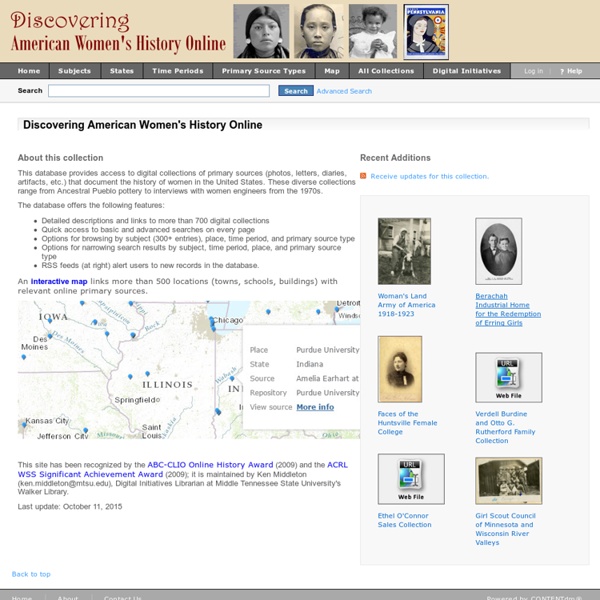



Atlas of the Historical Geography of the United States A spectacular historical atlas refashioned for the 21st century Here you will find one of the greatest historical atlases: Charles O. Paullin and John K. Wright's Atlas of the Historical Geography of the United States, first published in 1932. This digital edition reproduces all of the atlas's nearly 700 maps. Many of these beautiful maps are enhanced here in ways impossible in print, animated to show change over time or made clickable to view the underlying data—remarkable maps produced eight decades ago with the functionality of the twenty-first century. hide introductory video next Old Atlas, New Functionality Georectified Maps Most maps in the atlas have been georectified, warped so that they can be placed consistently on top of a digital map. Navigating the Atlas For most maps in the atlas click on georectified ⇆ plate to toggle back and forth between views of the georectified maps and how they look in the printed atlas. There are lots of maps in the Atlas.
Meet Jane, the 14-year-old eaten when the first British settlers in America turned to cannibalism: The macabre secrets of starving pioneers besieged by Red Indians Skull of a 14-year-old girl, named 'Jane of Jamestown', shows scratch marks Anthropologists from the Smith-sonian National Museum of Natural History analysed her skull and severed leg bones Dr Douglas Owsley said bones evidence of 'survival cannibalism' Human remains date back to the deadly winter of 1609-1610, known as the 'starving time' in Jamestown, when hundreds of colonists died By Annabel Venning for MailOnline Published: 22:35 GMT, 15 May 2013 | Updated: 22:35 GMT, 15 May 2013 She had arrived in America only a few months earlier. After a stormy 16-week voyage across the Atlantic, Jane, a 14-year-old girl from southern England, would have been relieved to reach land when she scrambled ashore at Jamestown, the first permanent English colony in America, in August 1609. But any sense of salvation was to be short-lived. A facial reconstruction of 'Jane of Jamestown' who archeologists believe was dug up and eaten by settlers. There was simply not enough to feed all the extra mouths.
Spare Rib Spare Rib was an active part of the emerging Women’s Liberation Movement in the late 20th century. Running from 1972-93, this now iconic magazine challenged the stereotyping and exploitation of women, while supporting collective, realistic solutions to the hurdles women faced. Visitors to this site can explore selected highlights from the magazine; and examine how the magazine was run, why it was started and the issues it dealt with. The full run of Spare Rib magazines can be accessed via Important information for researchers: from 7 June 2016, some material from the Spare Rib magazines on the journals archive site will be redacted until the Library is able to secure further copyright permissions.
National Women's History Project Feeding America Feeding America: The Historic American Cookbook Project The Project The Feeding America project has created an online collection of some of the most important and influential American cookbooks from the late 18th to early 20th century. The digital archive includes page images of 76 cookbooks from the MSU Library's collection as well as searchable full-text transcriptions. This site also features a glossary of cookery terms and multidimensional images of antique cooking implements from the collections of the MSU Museum. The Feeding America online collection hopes to highlight an important part of America's cultural heritage for teachers, students, researchers investigating American social history, professional chefs, and lifelong learners of all ages. Feeding America was made possible with funds from a 2001 IMLS National Leadership Grant. To learn more Information about the project please select one of the following: Top of the Page
'Politics Ain’t the Same' — How the 19th Amendment Changed American Elections - BillMoyers.com A line of suffragists march with banners that read "Come to the White House Sunday at 3," in Washington DC in 1915. (Photo by Harris & Ewing/Buyenlarge/Getty Images) My mother was born in the United States of America without the right to vote. I just stopped to re-read that sentence because it seems so, you know, quaint. By the time she neared voting age in 1920, the 19th Amendment to the Constitution was ratified, prohibiting federal and state governments from denying citizens the right to vote “on account of sex.” Sheet music cover image of Oh! That’s my ritual, too (without the body armor), which is why this Friday, Aug. 26 — the 96th anniversary of the day American women got the vote — I’ll offer my annual thanks to the women and men who made it happen. Not to mention countless insults, inanities and hurled rotten eggs. But the result changed the dynamic, opening the electoral process to more individuals than ever before in American history. Yeah, well. Give her half credit.
Digital Transgender Archive Internet History Sourcebooks Project Women's History Sourcebook "Yes, I am fond of history." "I wish I were too. How are historians to remedy the silence about women in many traditional accounts of history? The first solution was to locate the great women of the past, following the lead of much popular historiography that focuses on "great men". The next solution was to examine and expose the history of oppression of women. In recent years, while not denying the history of oppression, historians have begun to focus on the agency of women. These various approaches to the history of women are not exclusive. This page is a subset of texts derived from the three major online Sourcebooks listed below. For help in research, homework, and so forth see Contents The Historical Study of Women Human Origins Lawrence Osbourn: The Women Warriors [At Lingua Franca] Gerda Lerner: Summary of The Creation of Patriarchy [At Internet Archive, from unshine for Women] Ancient Egypt General Great Women Queens, Noblewomen, Warriors Women's Oppression
U.S. Army Center Of Military History